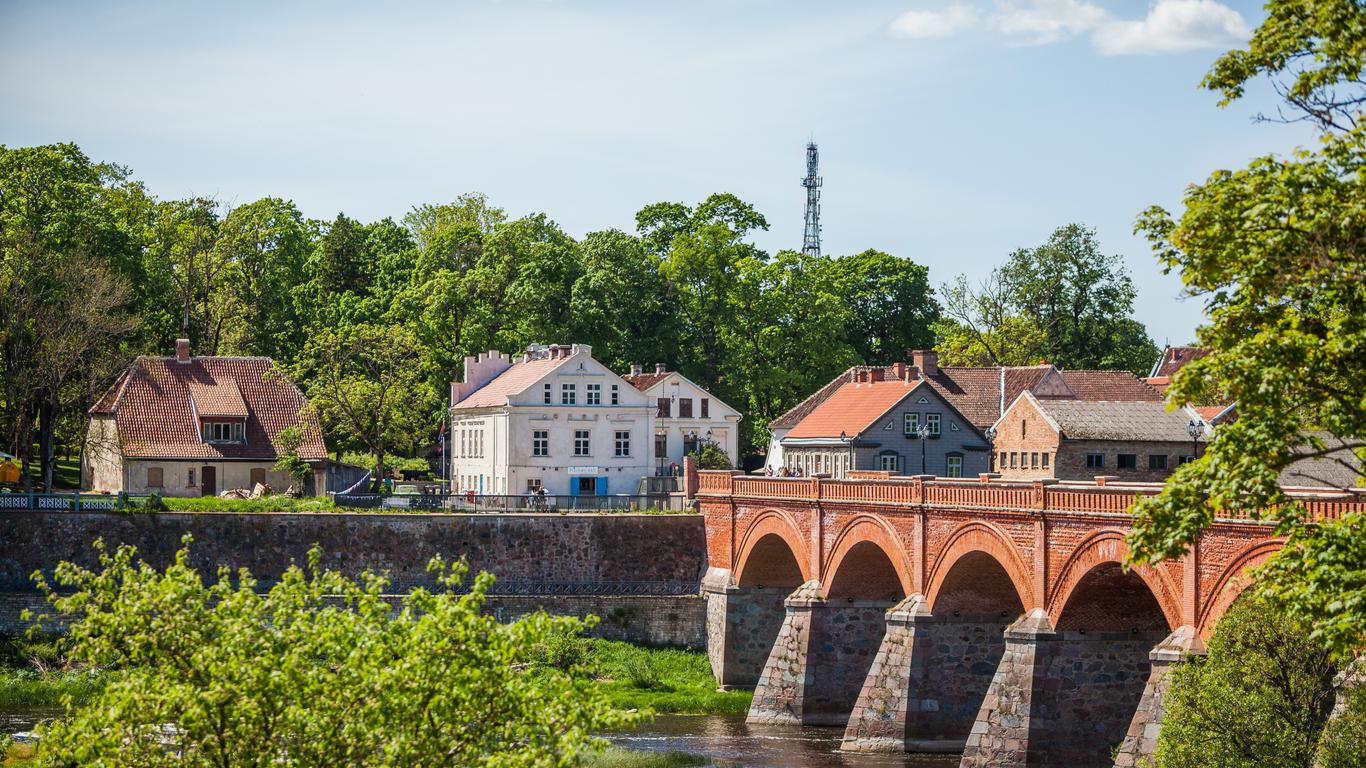Located in Latvia’s west is the historic town of Kuldīga which served as the capital of the Duchy of Courland between 1561-1795. It lies along the edge of the Venta River and has been nicknamed the “Latvian Venice”, with the narrow Alekšupīte River flowing between its charismatic townhouses.
The Kuldīga District Museum is a good place to start, with exhibits covering the town’s history and archaeological finds from the surrounding region. It is situated within picturesque Pils Park on the edge of the Venta River, not far from the elegant Kuldīga Court House and the Alekšupīte Waterfall. This body of flowing water was used to power the first paper-mill in Latvia’s western region of Kurzeme during the 17th century. One of the town’s oldest buildings, the Evangelical Lutheran Church of St. Catherine, also stands nearby, together with remnants of the 13th century Kuldīga Castle within what is now a sculptural park. An iconic brick bridge spans the Venta River to the east, built according to 19th century standards which allowed two carriages to pass and offering views towards the Ventas Rumba, Europe’s widest waterfall. Most of the old wooden buildings in the historic town centre date to the 17th and 18th centuries and feature entrance doors decorated with wooden carvings and skylights above which are unique characteristics of Kuldīga. The pedestrianised street of Liepājas is a particularly atmospheric place to wander, while a former synagogue, built in 1875, is among the town’s most impressive buildings. It now houses the Central Library and boasts a spectacular marble interior and gilded details, with an adjacent prayer house, Jewish school and sepulchre.
Kuldīga is situated around two hours’ drive west of the Latvian capital Riga and easily accessed by bus. The town itself is quite small, with its narrow streets and historic bridges best explored on foot.
Kuldīga was first mentioned in 1242 when the Livonian Order of Knights received permission to build a castle on the banks of the Venta River using dolomite from the river bed. In 1355, the Order’s master, Goswin von Herike, designated the town a coat of arms featuring an image of St. Catherine who has since been Kuldīga’s patron saint.





